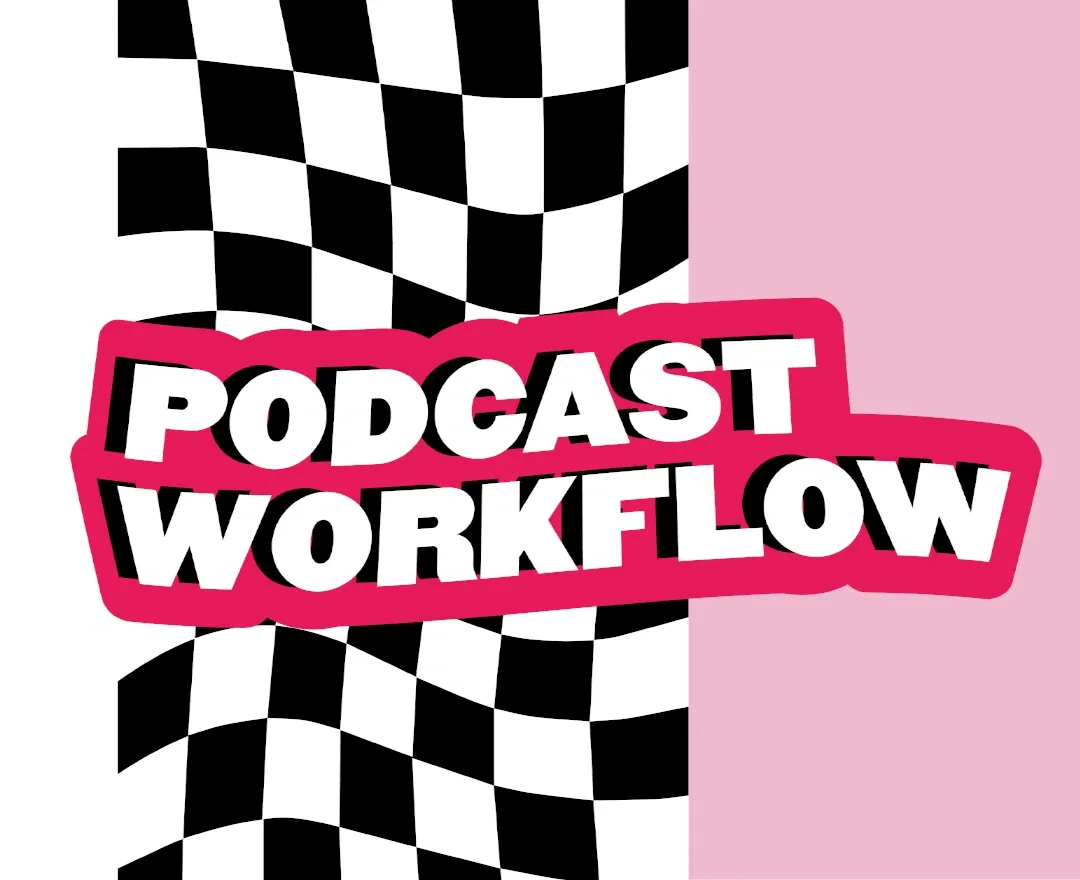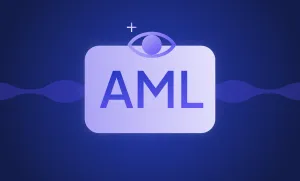Producing a quality podcast regularly is not an easy task. While listeners expect all your upcoming episodes to be of the same or better quality, podcast creators are no perpetual motion machines. You will inevitably lack inspiration or creativity at some point and may even feel like giving up. But hold on…
To avoid burnout and failures, you need to practice working with a predefined process layout or a podcasting workflow that meets all your project specifics.
Podcast workflow is an essential tool for many successful podcasters, which helps to break down the podcast creation process into small parts and make the whole process more manageable.
If you're not sure of what podcast workflow is and what's the ideal workflow for you, we're here with all the answers.
What is a podcasting workflow?
Podcast workflow is an organized chart comprising all the activities you complete to produce a podcast episode. It includes everything from the idea generation to the final submission of the show to a podcast directory.
The most basic example of a podcasting workflow may be:
Come up with a podcast topic > Write a script for the new episode > Record > Edit the recording > Publish the new episode.
There is no universal podcast workflow
No podcast workflow works well for everyone. Having the same core structure, podcast workflows may significantly vary for different podcasters because of two main reasons:
A podcast workflow largely depends on the podcast format
Podcasters deal with different activities depending on the type of podcast they produce. For example, a solo podcast usually requires a lot of attention to the host's speech, as it's the key hook for the show. An interview podcast, on the contrary, requires finding and contacting guests, crafting interesting interview questions, etc.
So, a podcasting workflow for an interview will be something like:
>Come up with an interview podcast
> Identify potential guests
> Brainstorm with the team to choose a guest to invite
> Identify channels for contacting the guest
> Get the guest's confirmation for attending the interview
> Brainstorm the interview questions
> Finalize the interview questions
> Set a final date & time for the interview
> Record the podcast
> Edit the podcast
> Publish
Each podcaster has their own approach to work organization
The thing is that each podcaster may have a different approach to the same process.
The podcast interview workflow above will look different if there is a scriptwriter who writes down the interview questions and presents them for the team's approval.
How to craft a perfect podcast workflow?
Ideally, you shouldn't have a podcasting workflow for your first podcast episodes. It's a rule of thumb to design a podcasting workflow after 5-6 episodes, as it's considered that only after a few successfully published episodes can a team identify an adequate flow for their procedures.
So, if your podcasting arsenal is rich with five or more published episodes, the steps below will help you create a perfect podcast workflow.
Step 1: List all your tasks in podcast production
As a first step, you need to write down all the tasks you usually complete to produce a podcast in a logical sequence. If some tasks can be divided into separate subtasks, rewrite the list until there is no room to break down the tasks. With time, you will find your ideal workflow, meaning you will adopt some approaches that work well and cut off the tasks which do not prove to be effective.
Dedicate some time for this step and make sure you do not miss anything, as in this stage you are laying the foundation for your podcast workflow.
Step 2: Document your tasklist
Once you have a clear outline of all your tasks, it's time to document them in a visually understandable manner. In this regard, grouping tasks with project management tools like Trello, Asana or Teamwork is a good way to go. You can also use monday.com workflow management software made with a customizable and robust workflow in mind. Those platforms allow you to organize all your tasks and subtasks into separate columns.
The standard stages of organizing your tasks include "To Do", "In the process," "Under review," and "Completed." With this approach, you can keep all your task statuses up to date, so that team members can easily track project performance anytime.
Step 3: Assign tasks to team members and create checklists
As the podcast workflow's primary purpose is to organize the proper distribution of work among the production team, at the final stage you need to assign team members. Everyone in the group should be updated on their part of responsibilities and deadlines. By delegating tasks to team members, you will improve the cooperation within the team and help everyone see the big picture you're moving to.
Also, it's crucial to have checklists to ensure the performance quality for each task. For example, a scriptwriter can have a checklist for writing an error-free copy, including ads in the middle of the show, etc.
Checklists help measure each team member's performance and the success of the whole team in general.
So, why do you need to write down every single step?
As an old saying goes, failing to plan is planning to fail. That's especially true for podcast production, where in order to nurture a loyal audience podcasters need to be consistent with their publishing schedule and content quality.
In this regard, a podcasting workflow is a powerful tool for turning your production chaos into a well-organized process.
Having an organized activity chart makes it easier to identify bottlenecks and improve the speed and quality of the process. Other than that, a detailed breakthrough of all the production processes helps you understand which tasks can be outsourced or automated to increase efficiency.
Long story short, doing something by the book possibly secures podcasters from unexpected production disruptions. As a result, you don't have to race against the clock to publish your next episode on time and can enjoy the podcast creation process to the fullest.








